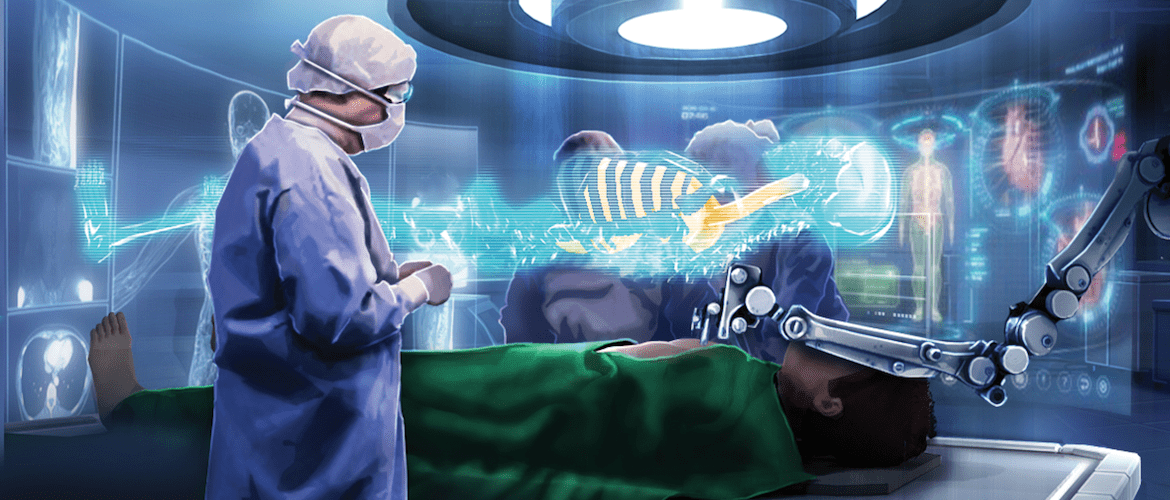
How technology will shape the hospital of the future
Technologies such as 3D printing, holography and nanotech could transform the hospital of the future.
Contact lenses that detect the glucose levels of diabetes sufferers. A device that can analyse DNA in under 15 minutes. Blood test results processed at a patient’s bedside. 3D printing of replica body parts to help with surgical procedures. Though these might sound like healthcare technologies from science fiction, they are in fact advancements we’ve seen already in the healthcare sector.
Over the next few years, we’re likely to see hospital leaders move towards incorporating more technology into the day-to-day running of hospitals. The hope is these technologies will reduce costs and increase the quality of patient care. But out of all the most headline-grabbing technologies we know about today, which are the most exciting and potentially revolutionary for healthcare, and why?
In this article, we list the five most futuristic-sounding technologies, outline how they could be used and explain why they might be visible in hospitals sooner than you might think.
Wearable technology could enhance patient care
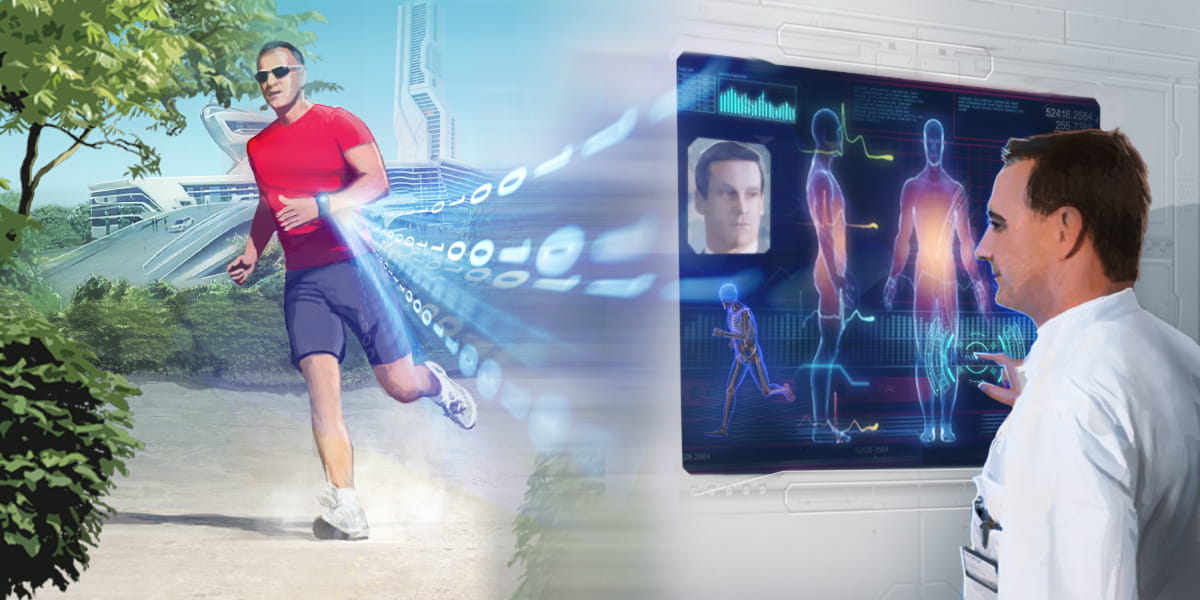
Until recently, the term “wearable technology” would have been unfamiliar to many. But today, wearables are proving popular in the consumer fitness market, and there’s great potential for this technology to advance patient care in hospitals too.
The latest devices on the high-street deliver basic health-related data, tracking things like step count, heart rate and quality of sleep. These days, it’s not unusual to see people comparing their health data with one another on their smartphones. But users could soon be sharing their results with their doctor too.
Sensors within the most advanced wearable devices can convert a biological reaction to an electrical pulse to track patients’ vital signs. This can then provide digitised data to support care by sending alerts to health professionals. It could even be used to trigger a delivery of medicine from a pharmacy.
There are already some exciting pieces of wearable health tech on the market. ADAMM, made by Health Care Originals, provides a complete solution for managing asthma. This device tracks cough counts, wheezing and heart rate, for example, as well as providing medication reminders. HealthPatch MD, by VitalConnect, is a biosensor suitable for both in- and out-patients who need to track their heart activity. And, in collaboration with the Swiss pharmaceutical firm Novartis, Google have created Smart Contact Lenses, which are used to measure the glucose content in the eyes of people suffering from diabetes.
With automated data gathering like this, monitoring patients could become far easier. Whilst most of this data-driven technology could be used by out-patients in everyday life, it could also play a significant role in hospital care.
Handheld diagnostics could be used to track vital signs
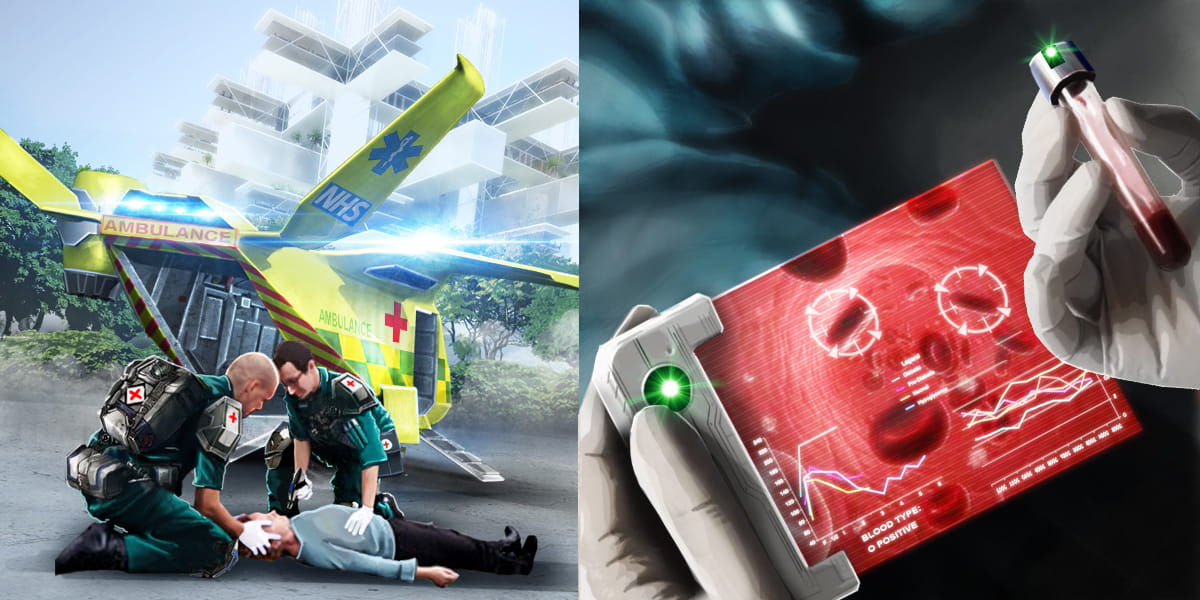
Nanotechnology is the study and application of individual atoms and molecules. The use of nanotechnology in healthcare can increase the potential of biosensors that work to do more than just track vital signs. Companies are now developing this technology to enable diagnosis to be carried out at a patient’s bedside. This is aimed at replacing complex and time consuming processes such as blood, urine and DNA tests. These non-invasive devices could provide data that would enable swift analysis of a patient’s condition.
An example of this type of technology is the QuantuMDx Q-POC: a smartphone-like device for analysing DNA in under 15 minutes. This is a cheaper but accurate way of diagnosing diseases such as malaria, TB, HIV and cancer, in order to promptly determine the most suitable treatment for patients. Providing accuracy which you’d expect from a modern laboratory, this device can be used at a patient’s bedside for a fraction of the cost.
Another example is from Philips, which is developing a handheld device that can quickly process blood tests called the Minicare System. It can detect Troponin-I levels in the blood, an indicator of heart damage, in less than five minutes. These types of devices could also be used outside the hospital, in local health centres, in a patient’s home and by stand-by emergency medical crews.
Such technology could potentially be used to speed up the clinical diagnosis stage. And what’s more, thanks to new technologies there has been a shift from late-stage interventions to developing earlier, minimally-invasive treatments in an emergency. For instance, work has been done on an ‘intelligent knife’ that identifies the types of cells present in human tissue. It then indicates if there are any signs of inadequate blood supply, bacteria or cancer.
Augmented reality could help support patient care, diagnosis and treatment
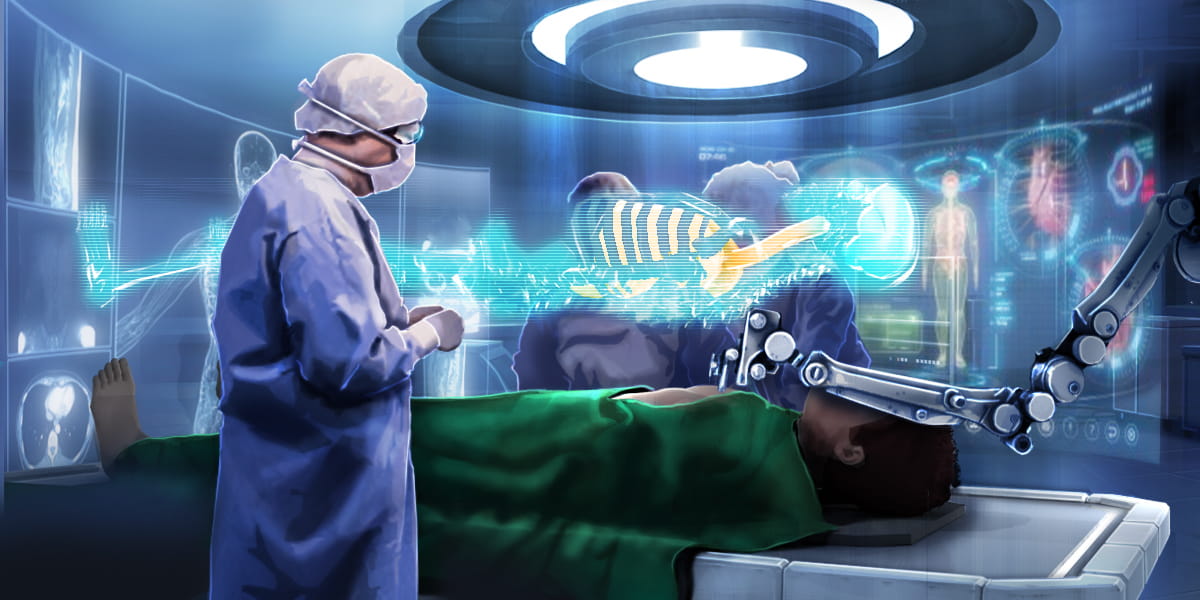
There are many different ways that augmented reality could be incorporated into healthcare, from training and education to patient care. Augmented reality offers a new way to interact with data hands-free, which will provide a greater level of control and access to knowledge. An example of this type of technology is the AccuVein scanner which has been developed to digitally display a map of veins on the skin in real time, to make it easier to draw blood.
One of the earliest vehicles for augmented reality in hospitals was the Google Glass smart spectacles. This device has provided layers of data and visualisations over a patient’s body, for example. It has also already been used by pioneering surgeons to upload x-rays or ultrasound scans to devices, which can then be compared with a patient’s body during surgery.
To further enhance this process, small needles can be embedded into the skin to provide tracking points that can be detected by the glasses or a tablet, which gives a surgeon a more detailed picture to support the procedures. Similarly, Google Glass can be used in minimally-invasive surgery when a camera is inserted into the patient’s skin. The image projected to the surgeon can be overlaid with details of vital signs or important background information.
All this amounts to a huge list of exciting opportunities for hospitals to improve the quality of their care using augmented reality.
3D printing and holography could provide more insight into patient care
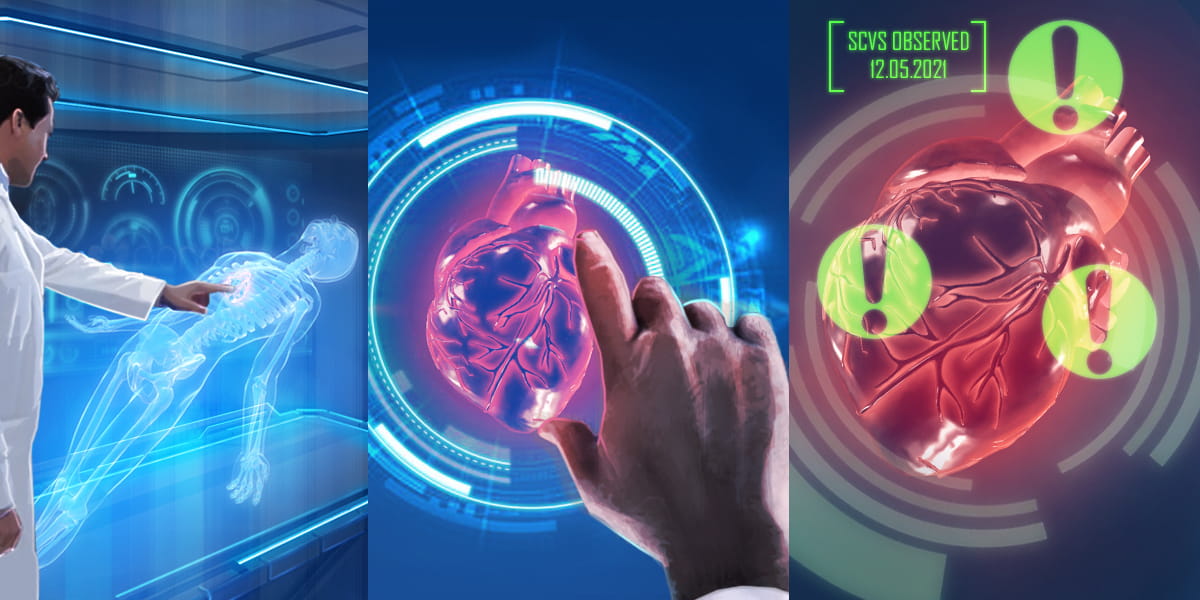
3D printing gives healthcare professionals the ability to convert a CT scan into replica body parts. Surgeons are starting to print models of a patient’s organ to examine before a complex procedure, helping them better understand the work required. In future they could also manufacture prosthetic body parts or even live tissue using 3D printing. Whilst many of the possible uses are still in the testing and research stage, there are products already available in some parts of the world, including LayerWise orthopaedic, facial, spinal and dental implants from 3DSystems, and exVive3D bioprinted human tissue from Organovo.
Holography is another exciting new technology with healthcare potential. This technology has been described as “3D printing in space”, because it involves projecting the image in light rather than creating a solid object. It can use the 3D digital file from an MRI scan to create a 360 degree image of a human organ, to provide a clinician with a perspective that goes deeper than a traditional scan. It can be manipulated, enlarged, rotated and marked to identify weaknesses and provide guidance on how the organ should be handled during a surgical procedure.
The central challenge for healthcare services in the coming years
To provide the most effective medical care, in-depth understanding of the patient is key, and recent advances in technology have allowed medical professionals to gain a deeper insight. The technologies we’ve discussed here are just some of the advancements which are set to transform the nature of healthcare. With growing discussion about how tools like these could be incorporated into standard patient care, hospital leaders are now exploring the many ways that such technology could become part of the hospital of tomorrow.
Visit our dedicated healthcare solutions page.




